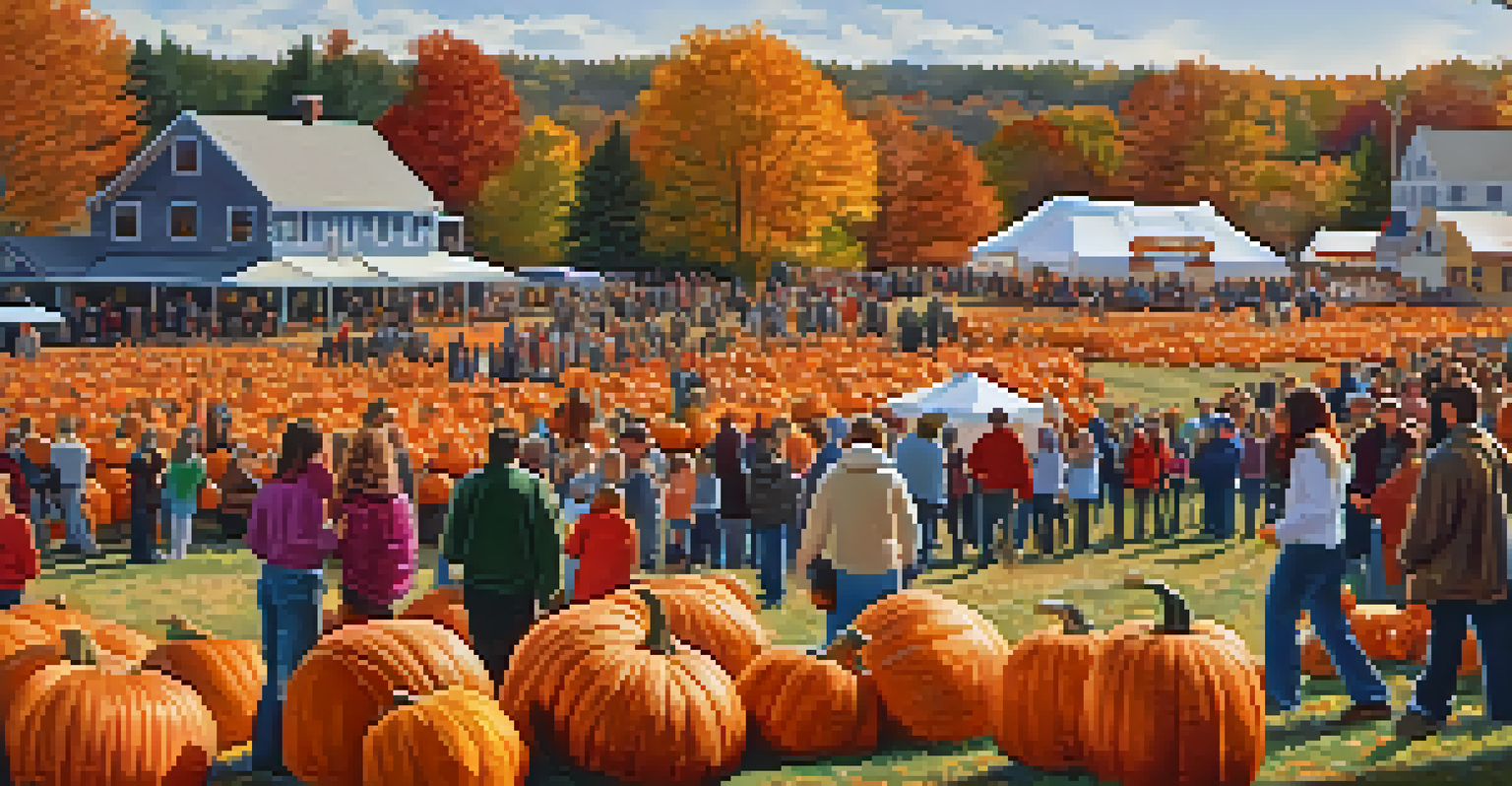Cultural Significance of Plants in Global Festivals

Plants as Symbols of Life in Festivals Around the World
Many cultures around the globe use plants as symbols of life and renewal during their festivals. For instance, during the Cherry Blossom Festival in Japan, the blooming sakura trees represent the beauty and transience of life. Similarly, in spring celebrations, flowers often symbolize new beginnings and hope.
The earth laughs in flowers.
These plant symbols connect people to nature and remind them of the cycles of life. Festivals like Holi in India incorporate vibrant flowers and colored powders, signifying the arrival of spring and the triumph of good over evil. This relationship with plants enriches cultural narratives and fosters community bonds.
By appreciating the life cycle of plants, societies celebrate not only their heritage but also the environment. As people gather to enjoy these festivities, they cultivate a deeper respect for the natural world, reminding us all of our interconnectedness.
Ritualistic Uses of Plants in Religious Celebrations
In many religious festivals, specific plants are used in rituals to signify spiritual meanings. For instance, during the Day of the Dead in Mexico, marigolds are believed to guide spirits back to the living world. The vibrant colors and strong scent of these flowers create a path for the deceased to return home.

Similarly, in Hinduism, mango leaves are often used to adorn homes during festivals like Diwali, symbolizing prosperity and good fortune. These practices highlight how plants are intertwined with spiritual beliefs, adding depth to the celebrations.
Plants Symbolize Life in Festivals
Plants are integral to festivals worldwide, representing life, renewal, and cultural identity.
Through these rituals, communities not only honor their deities but also strengthen their cultural identity. The use of plants in these ceremonies fosters a sense of belonging and continuity, connecting generations through shared traditions.
Traditional Folk Festivals and Their Plant Elements
Many folk festivals celebrate local flora, showcasing the plants that are integral to a region's identity. For example, the Lavender Festival in Provence, France, highlights the significance of lavender not only as a crop but also as a cultural icon. Visitors gather to celebrate its beauty and aroma, reinforcing local traditions.
In every walk with nature, one receives far more than he seeks.
In the United States, the annual Pumpkin Festival in New Hampshire honors the humble pumpkin, which plays a central role in harvest celebrations. This event not only showcases the agricultural heritage of the area but also fosters community spirit through contests and activities.
These festivals serve as a reminder of the importance of local plants in our lives. By celebrating these natural elements, communities preserve their cultural narratives and promote sustainable practices.
Plants and Their Role in Culinary Festivals
Culinary festivals often highlight plants as key ingredients, showcasing their cultural significance in local cuisines. For example, the Garlic Festival in California celebrates garlic's role in various dishes, emphasizing its flavor and health benefits. Such events not only promote local agriculture but also educate attendees about the plant's history and uses.
Similarly, the Olive Festival in Greece showcases olives and olive oil, integral to Mediterranean diets and cultural practices. Through tastings and cooking demonstrations, participants learn about the cultivation and harvesting processes, deepening their appreciation for this staple ingredient.
Rituals Showcase Spiritual Connections
Many religious celebrations incorporate specific plants to symbolize spiritual beliefs and strengthen community bonds.
By focusing on plants in culinary festivals, communities celebrate their agricultural heritage while fostering a love for local foods. These events encourage sustainable eating practices and highlight the connection between food, culture, and identity.
Seasonal Celebrations and the Use of Plants
Seasonal festivals often reflect the natural cycles of planting and harvesting, with plants playing a crucial role in the celebrations. For instance, the Harvest Festival in the UK features an abundance of fruits and vegetables, symbolizing gratitude for the land's bounty. This event brings communities together to celebrate the fruits of their labor.
In autumn, many cultures celebrate the changing seasons with festivals that highlight local flora. The Fall Festival in the United States showcases pumpkins, hayrides, and apple picking, making it a delightful way to enjoy nature's transition. Such celebrations reinforce the importance of seasonal awareness and sustainable practices.
By incorporating plants into seasonal festivities, communities cultivate a deeper understanding of nature's cycles. This connection encourages people to appreciate and protect the environment, fostering a sense of responsibility towards the planet.
Plants in Festivals Promoting Environmental Awareness
With growing concerns about the environment, many festivals now focus on promoting sustainability through the celebration of plants. For example, Earth Day features events that highlight the importance of trees and plants in maintaining ecological balance. Activities like tree planting not only engage the community but also promote environmental stewardship.
The Flower Festival in various cities often emphasizes the beauty of native plants and their role in local ecosystems. By educating participants about conservation, these festivals inspire action towards protecting biodiversity and natural habitats.
Culinary Festivals Celebrate Local Flora
Culinary festivals highlight the importance of plants in local cuisines, promoting agricultural heritage and sustainability.
Through these plant-centered events, communities raise awareness about environmental issues while celebrating nature. This blend of festivity and education fosters a collective commitment to sustainability, encouraging future generations to respect and protect our planet.
Cultural Exchange Through Plant-Based Festivals
Festivals that focus on plants often serve as platforms for cultural exchange, allowing communities to share their traditions and practices. For example, the International Flower Festival in various countries invites participants from around the world to showcase their floral designs and customs. This event fosters a sense of global unity rooted in appreciation for nature.
Moreover, food festivals that emphasize plant-based cuisine, like Vegan Fest, encourage dialogue about health, sustainability, and cultural values. Attendees learn about new culinary traditions and the significance of plants in various cultures, enriching their understanding of global diversity.

These exchanges promote respect and appreciation for different cultural practices centered around plants. By celebrating diversity through festivals, communities can build bridges and foster friendships across borders.
Conclusion: The Lasting Impact of Plants in Festivals
In conclusion, plants hold immense cultural significance in festivals around the globe. They serve as symbols of life, play vital roles in rituals, and enrich our culinary experiences. Through seasonal celebrations and environmental awareness, plants connect communities and foster a sense of identity.
As we continue to celebrate these natural elements, it is essential to recognize their role in promoting sustainability and cultural exchange. By honoring the plants that shape our festivals, we cultivate a greater appreciation for the environment and the diverse traditions that enrich our lives.
Ultimately, the cultural significance of plants in global festivals reminds us of our shared humanity and the importance of nurturing our relationship with nature. As we gather to celebrate, let’s embrace the connection we have with plants and the stories they tell.